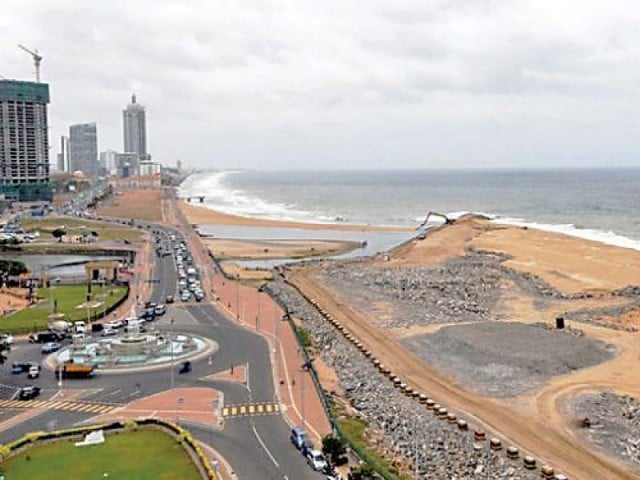The Pakistan Business Council (PBC) suggests increase in exports of bikes, cement to Sri Lanka
Posted on October 20th, 2018
By Bilal Hussain Courtesy The Express Tribune
According to the PBC – a business policy advocacy platform, the purpose of the study is to analyse the performance of the FTA to date and to highlight the opportunities available to both partners to increase bilateral trade. The FTA with Sri Lanka is considered the most successful signed by Pakistan.
It is part of our continuing review of trade agreements, to identify areas in which Pakistan could improve,” PBC CEO Ehsan Malik told The Express Tribune. Moreover, Adviser to Prime Minister on Commerce Abdul Razak Dawood has also recently said that all trade agreements are up for review.

Sri Lanka is a significant part of BRI and has agreed to some projects with the Chinese government like the Matara-Kataragama Railway Project, Colombo Port City Project, Hambantota Port Development Project and Extension of South Expressway Project. PHOTO: FILE
Motorcycle and cement are the two industries where Pakistan has the potential to increase its exports to Sri Lanka.
There is a growing demand for motorcycles in Sri Lanka as the number of registered motorcycles in the country rose at an average of 9.7% over the period 2012-17. Pakistan, on the other hand, has a strong motorcycle industry with yearly production of 2.45 million units.
Focus only on boosting exports is a bad strategy
In 2017, of the 2.45 million units produced, Pakistan managed to export only 9,450 units, most of which were shipped to Bangladesh and Afghanistan.
For the motor vehicles manufactured in Pakistan, the government needs to harmonise its emission standards with those followed worldwide. This will not only make our vehicles more environment-friendly, but will also enhance our export portfolio,” the report stressed.
Meanwhile, the cement industry is among the highest contributors to the national exchequer. In 2017, Pakistan was the 12th largest exporter of cement in the world with exports of $210 million. Exports of cement were much higher in 2013, but have recently decreased due to high local demand.
However, to cope with the high demand, Pakistani cement manufacturers have already commenced projects to increase production by 5.2 million tons. These projects are expected to be completed by the end of 2018. Two major issues highlighted by the cement manufacturers as impacting their global competitiveness are high import tariffs on coal and a severe bottleneck at the port, which leads to inefficiency,” stated the report.
Nearly half of export receipts come from just six countries
The government needs to address the issues faced by exporters at the port. This can be done by increasing storage space, reducing the storage rent and giving priority to exporters over importers, it added.
Sri Lanka is also a significant part of the Belt and Road Initiative (BRI) and has agreed to some projects with the Chinese government like the Matara-Kataragama Railway Project, Colombo Port City Project, Hambantota Port Development Project and Extension of South Expressway Project.
The FTA between Pakistan and Sri Lanka came into effect in July 2005 after being signed in August 2002. Under the FTA, Sri Lanka was given immediate duty-free market access for 206 products.
Pakistan, on the other hand, received duty-free access for 102 products. Further concessions were agreed in November 2010.
Bilateral trade with Sri Lanka has mostly been in favour of Pakistan since the signing of the FTA. Pakistan’s exports more than doubled from 2005 to 2011 while imports stayed relatively constant. Pakistan enjoyed its largest trade surplus in 2011 which was worth $287 million.
Exports fell after 2011 and reached $269 million by 2017. Imports, on the other hand, rose about 60% since 2011 and reached their peak at $103 million in 2017. Pakistan’s trade surplus with Sri Lanka in 2017 was $166 million.
The study identifies 20 products which have the potential to push up Pakistan’s exports to Sri Lanka by $1.14 billion. An analysis of Sri Lanka’s tariff regime shows that amongst Pakistan’s top 20 exports to Sri Lanka, only four products receive better tariff rates than those applied to India and China.
Published in The Express Tribune, October 20th, 2018.